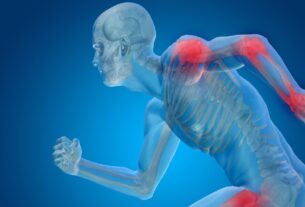Sleep apnea and temporomandibular joint (TMJ) disorders are two distinct yet interconnected health concerns. While sleep apnea affects breathing during sleep, TMJ disorders involve the jaw joint and surrounding muscles. Recent research has revealed a fascinating link between these conditions, suggesting that addressing one might influence the other. Consult a dentist in Downtown Chicago if you have this concern.
Understanding Sleep Apnea
In the case of Sleep apnea, there are repeated interruptions in breathing during sleep. In Obstructive sleep apnea (OSA), wherein the airway becomes blocked, leading to a pause in breathing that can last for several seconds. This pause prompts the brain to wake the individual briefly to resume breathing, often causing disruptions in sleep cycles.
The Role of TMJ Disorders
The temporomandibular joint (TMJ) is a complex hinge joint. TMJ disorders encompass a range of conditions that affect this joint and the surrounding muscles. Jaw pain, clicking or popping noises, headaches, and difficulty in opening or closing the mouth are some of the symptoms. Stress, teeth grinding (bruxism), and misalignment of the teeth and jaw are common contributors to TMJ disorders.
The Connection: Bidirectional Influence
Recent studies have highlighted a bidirectional relationship between sleep apnea and TMJ disorders.
- Muscular Tension: Individuals with sleep apnea often experience episodes of clenching or grinding their teeth, especially during periods of interrupted breathing. This can lead to muscle tension around the jaw joint, exacerbating TMJ disorder symptoms.
- Airway Collapse: The collapse of the airway in sleep apnea can lead to changes in tongue and jaw position as the body attempts to maintain an open airway. This altered positioning can, over time, contribute to TMJ discomfort.
- Brain Pathways: Shared neural pathways connect the brain areas responsible for sleep regulation and pain perception. Disturbances in one area, such as sleep apnea, can influence pain perception, potentially contributing to TMJ-related discomfort.
- Inflammation: Both sleep apnea and TMJ disorders have been associated with inflammation. Inflammatory processes can contribute to tissue damage and pain in the TMJ region.
Managing the Relationship between Sleep Apnea and TMJ Disorders
Addressing the relationship between sleep apnea and TMJ disorders requires a multidisciplinary approach:
- Collaboration: Dentists, sleep specialists, and medical professionals should collaborate to provide comprehensive care, recognizing the potential impact of one condition on the other.
- Oral Appliances: Dental appliances used to treat sleep apnea (such as mandibular advancement devices) can sometimes inadvertently affect TMJ function. Customized fittings and proper adjustments are crucial.
- Stress Management: Since stress is a common factor in both conditions, stress-reduction techniques can alleviate symptoms of both sleep apnea and TMJ disorders.
- Positional Therapy: Adjusting sleep position can influence both conditions. Elevated sleep positions may aid in reducing airway collapse and relieve pressure on the TMJ.
The intricate relationship between sleep apnea and TMJ disorders underscores the interconnectedness of various bodily systems. Collaborative efforts between medical and dental professionals, along with lifestyle modifications, can contribute to improved outcomes for individuals dealing with these challenging conditions.





